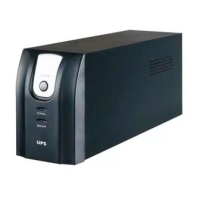Page 18 of 27
Avoiding Potential Glitches
1. Configuring the HP software for delay before shutdown
One must consider the run time required to gracefully shut down a system. Every server with its
configured operating system (OS) and subsequent attached storage has a required time for shutdown,
which must be taken into account when configuring the UPS software so sufficient battery life is allotted
for the graceful shutdown of the attached equipment. However, it is recommended that the software be
configured with a small delay before shutdown (30 seconds). If an event were to occur that would cause
the UPS to revert to battery, the delay would provide enough time to check if utility power returns and
then abort the planned shutdown. If a delay is not set, then every time the UPS goes on battery to protect
from a power anomaly, the UPS software will direct the attached load to shut down. For detailed
information and a step-by-step process to configure this, please refer to your Owner’s Manual.
2. When Performing a Hot Swap Electronics Module Replacement on the R3000 UPS
electronics module
When installing or replacing the electronics module on the HP R3000 UPS, the Test/Reset button must
be held in while seating electronics module for at least 5 seconds otherwise it is possible that the load will
shut down. Please refer to your Owner’s Manual for further instructions.
3. Installing Extended Runtime Modules (ERMs)
Depending on the UPS model, you may need to manually inform the UPS when an ERM has been
added. On many models this can be done via the front panel. However, with some UPSs you may need
to run a ERM configuration utility that can be found on hp.com If this process is not completed, the ERM
will still provide backup time to the equipment; however, proper runtimes and data will not be correctly
reported. For more information, please refer to the documentation at
http://h18004.www1.hp.com/products/servers/platforms/rackandpower.html.
4. Do not load a UPS past 80%
Although it is acceptable to load a UPS to 100% capacity, it is not recommended. Load devices, like
servers and storage, have an initial inrush current that exceeds their normal operating current. If a UPS is
loaded to 100% capacity, the initial inrush current of powering on the load devices could cause an
overload condition.
Additionally, as batteries age, the runtime is often adversely affected. When a UPS is loaded to 100%
with older batteries, there may not be sufficient runtime to gracefully shut down the load.
5. Considerations when configuring a redundant system
When configuring a UPS in a redundant configuration --- in which one UPS would assume the load of a
second UPS if needed --- the UPS should not be loaded past 40%. Therefore, in the event that the
second load was assumed, the combined total would not exceed the recommended maximum capacity of
80% (as described in #4 above). Additionally in order to configure a UPS in a redundant configuration one
must purchase and install an HP Management Module (www.hp.com/products/ups) in each UPS.
6. Battery Testing
The battery test function in HP Power Manager does not initiate a battery test on the rackmount UPS
models, nor does it represent the results of the internal UPS battery tests.
The rackmount UPS automatically performs a battery test each time it enters into rest mode, which is
reached after the battery charge cycle is complete and the charger is turned off, usually within 72 hours of
the beginning of the charge cycle. At the beginning of each rest mode, the UPS will measure the battery
voltage degradation over a 10-day period. If after 10 days the voltage has degraded more than what the
algorithm allows, then the battery alarm will indicate a bad battery. The purpose of this continual testing is
to provide an advanced warning of a potentially failing battery.

